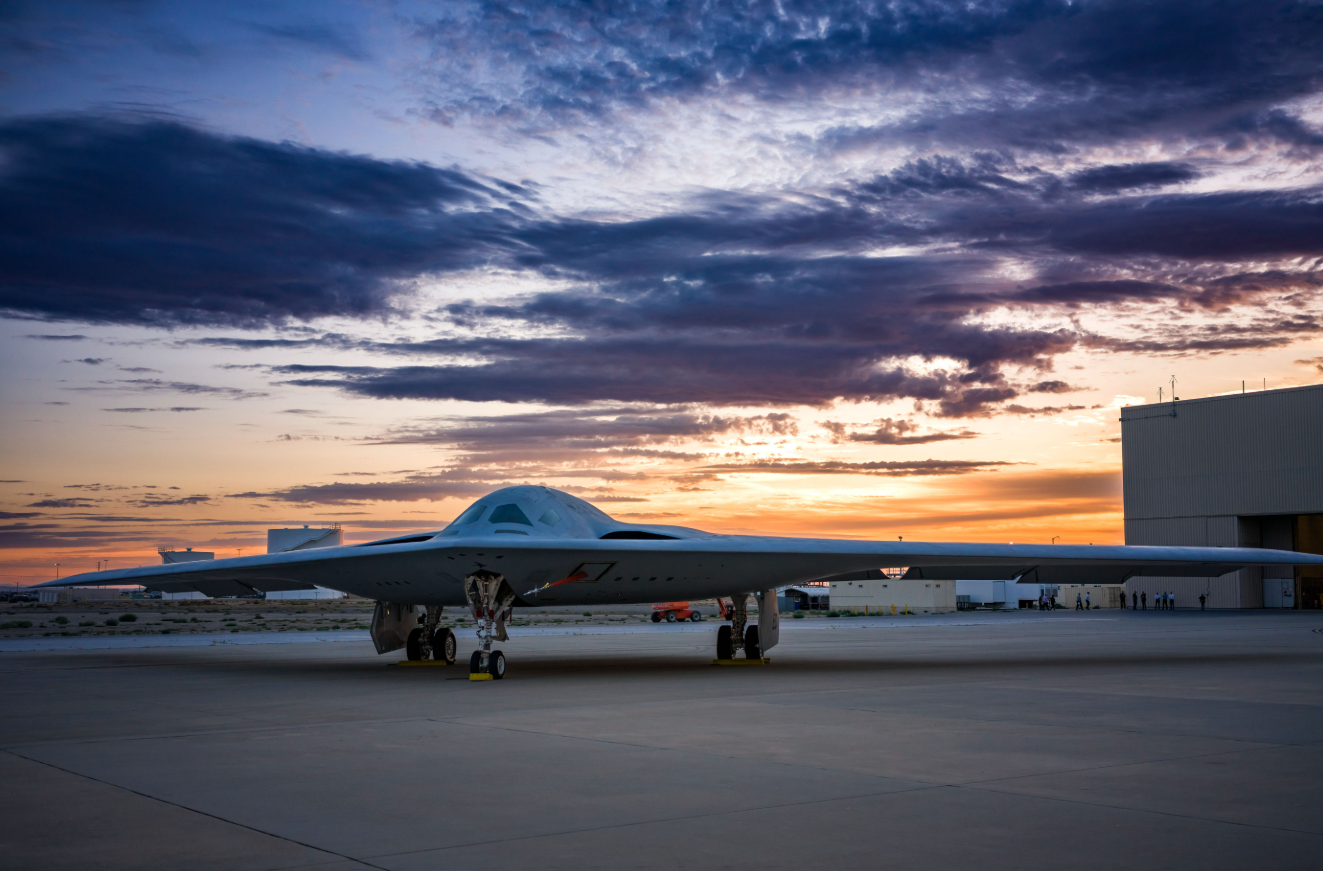
The B-21 Raider has officially stepped into the spotlight—and it’s done far more than just turn heads. As the first new long-range bomber introduced in over 30 years, it marks a bold new chapter in aerial combat. This isn’t just a new aircraft—it’s a signal of intent. In a world where adversaries are constantly sharpening their tools, the B-21 is America’s way of saying: we’re ready for the future, and we’re not taking chances.

What makes the B-21 special isn’t necessarily its streamlined appearance or futuristic style. It’s what’s inside—the decades of advancement in stealth and digital design. Based on 50 years of low-observable aircraft history, the B-21 is designed to be even more difficult to detect than its predecessors, like the iconic B-2 Spirit. Defense Secretary Lloyd Austin once commented: New air-defense systems will be able to barely even detect that it’s there.

And beyond stealth, the plane is designed to be able to accommodate. Its open-systems architecture allows it to take in new tech as it’s developed. That means future weapons and cyber technologies that are still in development. And because of its digital infrastructure, the plane has already been through hundreds of simulated flight tests before ever landing on the runway, conserving years of expensive delays.

What also distinguishes the B-21 is its unparalleled flexibility. It’s capable of carrying both nuclear and conventional weapons, and it doesn’t even require a pilot on board if the mission calls for it. It’s equally good at conducting surveillance, intercepting enemy communications, or serving as a high-flying communications relay as it is at providing strategic payloads. Its reach? Virtually worldwide. It doesn’t have to be based near the action, which makes it more difficult to anticipate and virtually impossible to box in. When threats refuse to play by traditional territorial rules, that kind of reach matters.

However, constructing the world’s most sophisticated bomber isn’t cheap. The program hasn’t been exempt from financial hurdles. Northrop Grumman in late 2023 disclosed a $1.6 billion pre-tax charge against the B-21, raising new alarms about defense spending. It’s still far less than the approximately $2 billion cost of the B-2, but it’s still a substantial investment at approximately $692 million per unit.

The entire program would cost more than $200 billion for a minimum of 100 aircraft, and some feel it won’t be enough. General Tony Cotton, in a Congressional hearing, estimated the Air Force might require up to 145 Raiders to satisfy worldwide mission requirements. Others have speculated higher numbers close to 250. With those numbers, demands have mounted for a second production line—both to accelerate delivery and guard against disruptions in the defense supply chain.

That leads logically to one of the most contentious questions in the defense community: In an age of drones and artificial intelligence, do we still need manned bombers? Critics claim that unmanned platforms can now perform many of the same missions at lower cost and risk. But the B-21’s proponents resist forcefully.

They emphasize the worth of real-time human judgment on high-risk missions, the persistence and flexibility that crewed aircraft offer, and their inimitable role in nuclear deterrence. Strategic bombing is not simply the matter of pressing a button from a distance—it’s the matter of knowing the battlefield as it unfolds, and making rapid judgments. That, most insist, still demands the presence of human beings.

Even considering the cost and the nuances of contemporary war, the B-21 represents a keystone of American defense for the coming era. It’s the product of years of cooperation between the military, defense contractors, and thousands of suppliers around the country. Behind the scenes, agencies such as the Office of Special Investigations have worked relentlessly to keep the technology out of the hands of enemies and insider threats. It’s not merely a matter of constructing an airplane—it’s about protecting a strategic advantage that typifies contemporary military prowess.

As the Raider moves closer to full production readiness, it’s already ruffling feathers far removed from the hangars. It’s transforming the way other countries think about deterrence and the character of future conflict. The U.S. isn’t only maintaining the status quo in stealth warfare—it’s rewriting the blueprint. This plane may very well be the foundation of long-range strike for generations to come.

And don’t be mistaken, this is only the beginning of its tale. As production grows and the B-21 becomes part of the active force, its true capabilities remain to be seen. The question isn’t whether the B-21 will meet the challenge—it’s just how much it will change the rules of modern warfare once it takes to the skies.
